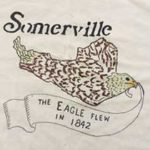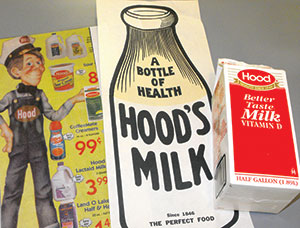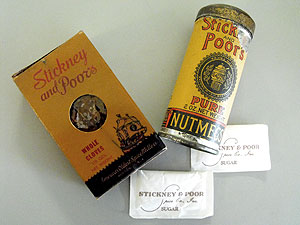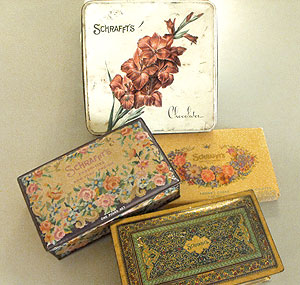 Eagle Feathers #295– Three’s company
Eagle Feathers #295– Three’s company
By Bob (Monty) Doherty
During the 1800’s, Somerville was a preferred location for new homes and attracted various business-minded people because of its proximity to Boston. Many of these professionals wanted their businesses to have a Boston address, but still desired to live in a suburb just outside of the city. It became one of Boston’s most coveted bedroom communities. While this prompted many companies to set up shop near and around the Somerville border, three in particular come to mind as being true industry giants.

Had a glass of milk recently? If you have, there’s a good chance that it was produced by the H.P. Hood & Sons Corporation. The company was founded in 1846 by Harvey Perley Hood. Over the last 168 years, it’s grown into a $2 billion business, making it the fourth largest dairy business in the country. The Hood plant, early on, straddled the Somerville line, with multiple dairy buildings scattered throughout the city. Harvey’s family lived in various parts of Somerville and, as the company progressed, their residences included estates on Perkins Street, Walnut Street (on the Prospect Hill side), Benton Road and Westwood Road. H.P. Hood himself was one of the founders of the beautifully architected Congregational Church at the corner of Walnut Street and Bow, in Union Square. The exterior of the church remains relatively unaltered to this day. Members of the Hood family were represented in various areas of the city, including the Somerville School Committee and the Somerville Hospital Board of Trustees. The family business continues to thrive today and reminders of this can be seen not only on the shelf of your local supermarket, but in more prominent places such as the giant Hood bottle in front of the Boston Children’s Museum and in the sky in the form of the Hood Blimp.

In 1846, Rufus Stickney took over his father’s Boston-based spice business, becoming the sole proprietor of what was to become the Stickney & Poor spice company. He owned an estate, as well as other vast real estate holdings on Winter Hill, just off Broadway. Stickney Avenue, between School and Marshall, is named after him. The company was located in Sullivan Square on the corner of Cambridge & Spice Street, directly opposite of what is now the MBTA station. In 1893, he bequeathed $5,000 to help launch Somerville Hospital. This was, at the time, 20% of the cost of the total hospital. Stickney & Poor is the oldest spice milling company in the United States and today the name Stickney & Poor remains alive on billions of condiments and spice packets. In 2015, it celebrates its 200th birthday.

Also in Sullivan Square, in the year 1861, William F. Schrafft started his famous candy company. This was the onset of the Civil War and a large item of his business was the sale of jellybeans to families, which they would send to their Union soldiers. The company grew tremendously and, at one time, Schrafft’s restaurants could be found in Boston, New York city, Philadelphia and beyond. Amazingly, during the Great Depression, Schrafft’s sustained no layoffs, because no matter how bleak things got, money for chocolates was somehow always managed to be found. If you have ever been to what is now the popular bar called The Independent, in Union Square, you might notice how beautifully ornate the interior décor and woodwork of the bar is. This is because it used to serve as the Schrafft’s official boardroom. William Schrafft died in Somerville in 1906.
Many Somerville citizens found their occupations at these businesses and the three iconic Somerville-linked companies continue to live on in New England history.















Reader Comments